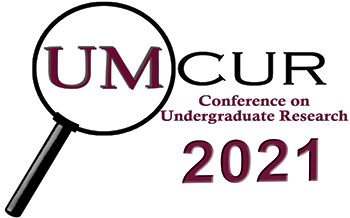Project Type
Presentation
Faculty Mentor’s Full Name
Philip Higuera
Faculty Mentor’s Department
College of Forestry and Conservation
Abstract / Artist's Statement
UMCUR Abstract
Reconstructing Historical Wildfire Temperatures by Analyzing Lake Sediment Charcoal Using Infrared Spectroscopy
Wildfire is a natural ecological process in the Northern Rockies that has shaped forest ecosystems for millennia. Anthropogenic climate change is altering fire regimes creating ecological, economic, and social challenges for people living in the West. Not all wildfires are the same. Moderate intensity fires burn at relatively low temperatures, combusting the understory vegetation and killing some trees, while hotter fires can kill most trees and lead to stand replacement. Lake sediments provide modern scientist with a record of historical fire activity spanning thousands of years. By extracting sediment cores and quantifying charcoal accumulation layer by layer, we are able to infer how frequently wildfires occurred in the past. A peak in charcoal accumulation indicates a fire event. However, these methods do not tell us anything about the intensity as which past fire burned, an important factor that in part determines fire impacts on ecosystems.
To infer the temperature of reconstructed fire events, I used infrared spectroscopy to analyze charcoal from lake sediment records. I created a set of modern charcoal samples from Northern Rockies native conifers, combusted at varying temperatures, and analyzed them using Fourier Transformed Infrared Spectroscopy (FTIR). FTIR measures vibrational state of molecules by quantifying the wavelengths of light the molecules absorb. At hotter temperatures, more complex molecules break down. Therefore, the spectrum obtained from a samples varies with the temperature at which the sample was combusted. I will compare the spectrums of charcoal from lake sediment to the modern samples to determine the range of temperatures at which historical fires burned. This will provide insights into changes in fire intensity over time.
Category
Physical Sciences
Reconstructing Historical Wildfire Temperatures by Analyzing Lake Sediment Charcoal Using Infrared Spectroscopy
UMCUR Abstract
Reconstructing Historical Wildfire Temperatures by Analyzing Lake Sediment Charcoal Using Infrared Spectroscopy
Wildfire is a natural ecological process in the Northern Rockies that has shaped forest ecosystems for millennia. Anthropogenic climate change is altering fire regimes creating ecological, economic, and social challenges for people living in the West. Not all wildfires are the same. Moderate intensity fires burn at relatively low temperatures, combusting the understory vegetation and killing some trees, while hotter fires can kill most trees and lead to stand replacement. Lake sediments provide modern scientist with a record of historical fire activity spanning thousands of years. By extracting sediment cores and quantifying charcoal accumulation layer by layer, we are able to infer how frequently wildfires occurred in the past. A peak in charcoal accumulation indicates a fire event. However, these methods do not tell us anything about the intensity as which past fire burned, an important factor that in part determines fire impacts on ecosystems.
To infer the temperature of reconstructed fire events, I used infrared spectroscopy to analyze charcoal from lake sediment records. I created a set of modern charcoal samples from Northern Rockies native conifers, combusted at varying temperatures, and analyzed them using Fourier Transformed Infrared Spectroscopy (FTIR). FTIR measures vibrational state of molecules by quantifying the wavelengths of light the molecules absorb. At hotter temperatures, more complex molecules break down. Therefore, the spectrum obtained from a samples varies with the temperature at which the sample was combusted. I will compare the spectrums of charcoal from lake sediment to the modern samples to determine the range of temperatures at which historical fires burned. This will provide insights into changes in fire intensity over time.
